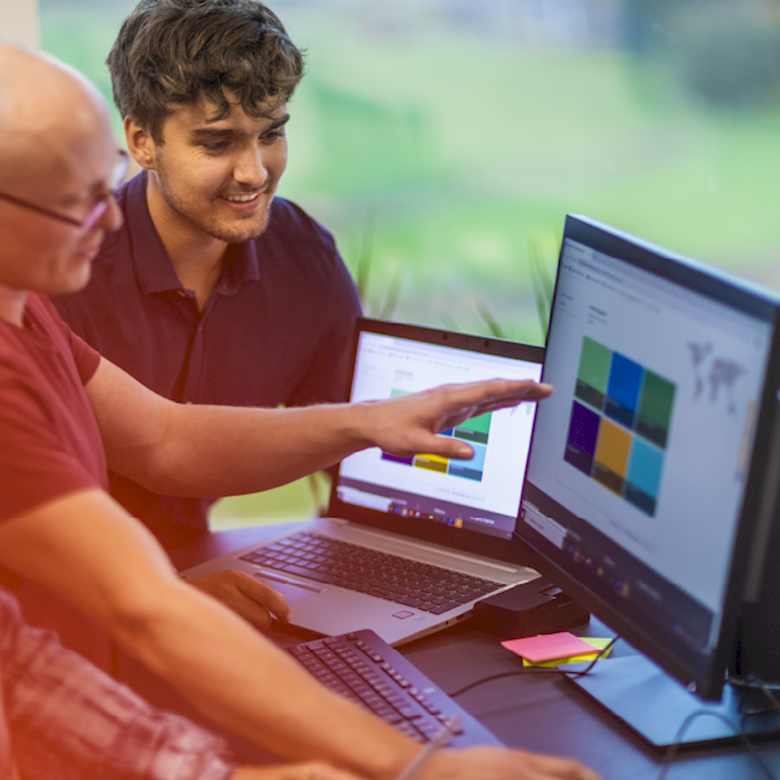Posted on Monday, May 3, 2021 by Lena Warming
The needed push for digital water? Reflections after one year of the COVID-19 pandemic
3 learnings after a year with COVID
#1: The time to go digital is now
It is a well-known fact that automation makes you more independent and efficient, and the water industry is no exception. But in a COVID-19 context and lockdown reality, this suddenly became especially relevant as contact restrictions, procedures and processes had to be digitalised within a short timeframe to ensure the retention of critical infrastructures – including water. Consequently, the pandemic has stressed the need for utilities to leave familiar paths like mechanical metering to make their water supply more resilient today as well as in the future.
Even before the Corona outbreak, water utilities faced several challenges that are difficult to handle and solve without digital solutions.
The crisis, therefore, only accelerated the digitalisation process all around us and highlighted the many benefits it brings.
First of all, remote reading allows you to say goodbye to reading cards, consumption estimates, and time-consuming manual meter reading. Depending on the size of the supply area, it takes a utility an average of two months to read all their meters. With remote reading, this is reduced to approximately two days, and with a fixed network, you get close to real-time access to your data while keeping your employees safe. But by digitalising your supply, you also improve things like meter connection time and meter accuracy, and the time spent on leak detection is reduced to around a third of what it takes today. You get detailed insight enabling you to optimise your network as well as reduce operational and maintenance costs. For instance, innovative analytics can provide a complete overview of your supply area, including information about flow rates, consumption, water loss and inefficient pipes making it easier to plan renovation efforts.
#2: Being in control is key
COVID has also forced many of us to rethink the way we work and our procedures, and as a result, the ability to create transparency and maintain control is now considered critical for utility professionals. And I’m not thinking linear here. Going digital is only the tip of the iceberg, meaning you go from an analogue process to an automated one. But that’s not where the real value lies. It comes from having frequent or even real-time data putting you in total control and allowing you to be agile and proactive.
With the availability of data, utilities can react to the constantly changing demands and expectations from their customers, such as individual information in the event of supply disruptions, the possibility of having their daily consumption overview available to them or even flexible, consumption-adjusted tariffs. But it also makes you more flexible when it comes to external events. For instance, in Germany, one of the government’s initiatives to support the economy and encourage spending was to reduce the general tax by 3% for nine months. For water utilities to be able to bill end users correctly, it would have made a lot of sense to do an in-between reading right before the activation of the reduced tax and then again at the end of the nine months. While manual meter reading doesn’t allow for this level of agility, it’s not an issue with a remote reading solution.
#3: You define your own digital
The third point I want to highlight is about staying true to yourself and crafting a plan that reflects your needs. In a crisis like the one we’ve experienced this last year, we must make adaptions and find solutions faster than we’ve done before. But while we can all agree that automating processes and getting accurate data for your operations is the way forward, no two journeys will be the same. Even today, some utilities are already operating in a partly digital reality, others have only just set out on their digital journeys, and others still have yet to get started. So, the real question is what kind of digital works for you, and where does your journey begin? The answers will depend not only on your network, setups and resources but also on what you consider your number one priority.
In the course of digitalisation, more and more communication technologies have become available for remote reading, and it can seem difficult to choose between the well-known M-Bus-based protocols and new IoT technologies. Every utility has different requirements for battery life, data frequency, network range and whether data is used for accurate and smooth billing only or also for analysis purposes, process optimisation and leak detection.
Chances are, this last year has highlighted the priorities and new needs for your utility that you want to work with now. In that sense, you could say the past year has given the industry a (necessary?) push to move forward with automation and take charge of future-proofing their metering solutions. Now it’s time to define the right next step for you, and we are here to help do that.
For the unforeseeable future, terms like lockdown, restrictions and distancing will be part of our reality, but rather than letting it control us, I encourage all of us to use it as an opportunity to prepare for the future.
If you would like to discuss more, feel free to reach out.
In the meantime: Stay safe.



